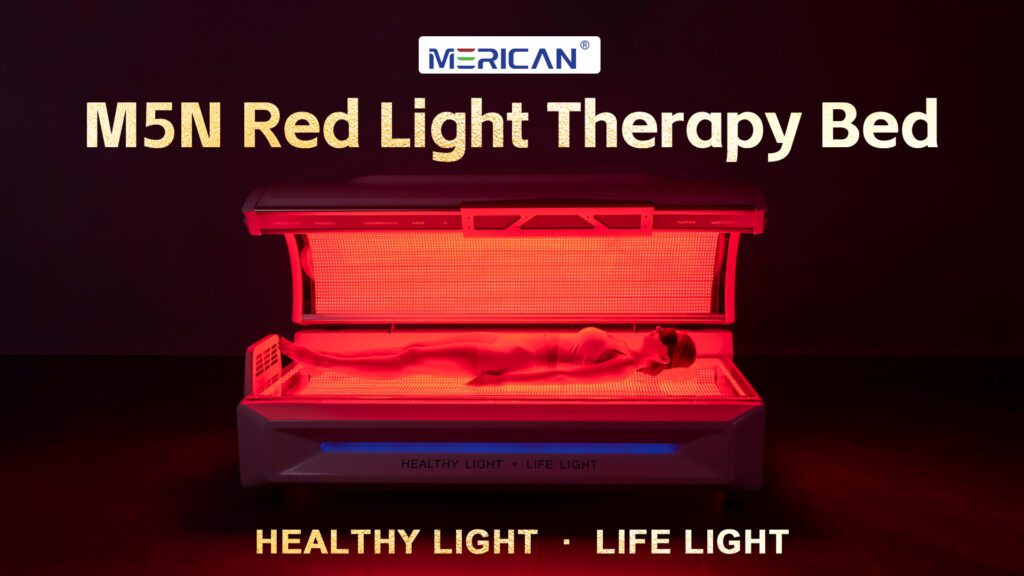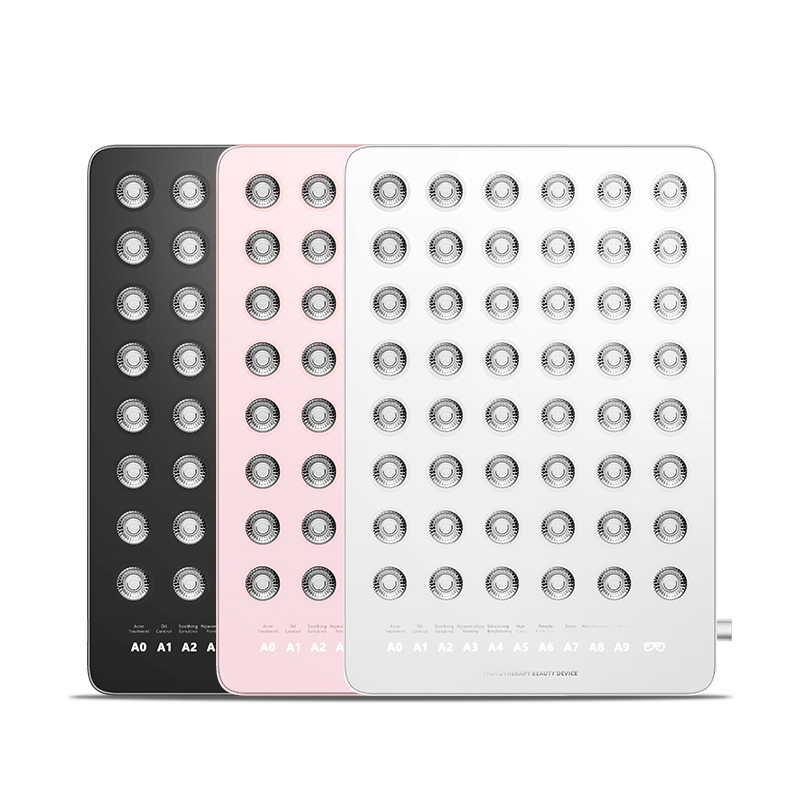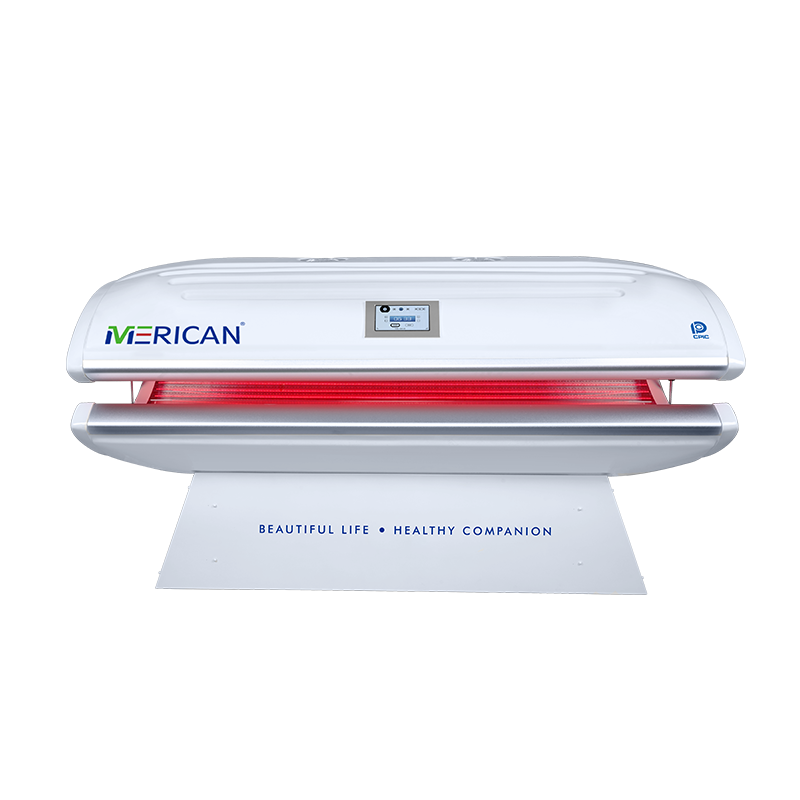La luminothérapie rouge peut être bénéfique en ce qui concerne l'amélioration de l'apparence de la peau, guérison des plaies, et gestion de la douleur, Selon la recherche actuelle.
La luminothérapie rouge utilise l'application thérapeutique de l'énergie lumineuse principalement pour aider à la guérison de la peau et des affections musculaires, comme les cicatrices et la tendonite. En exposant le corps à une faible longueur d'onde de lumière rouge (620 à 750 nanomètres), La luminothérapie rouge stimule une production d'énergie accrue dans les cellules, ce qui peut conduire à une myriade de prestations de santé.
Bien qu'il existe des études prometteuses suggérant l'efficacité de la thérapie par la lumière rouge, Plus de recherches sont nécessaires pour déterminer pleinement ses avantages potentiels. Cependant, il est déjà utilisé avec succès dans de nombreux contextes cliniques différents.
Lisez la suite pour en savoir plus, y compris les avantages potentiels.
Qu'est-ce que la thérapie rouge?
En ce qui concerne la découverte des avantages potentiels de la thérapie rouge, Vous pouvez réellement remercier les voyages à l'espace.
En octobre 1995, Sources de lumière rouge - Partie du spectre de lumière visible - fait leurs débuts en vol de navette spatiale sur le deuxième américain. Mission spatiale du laboratoire de microgravité (STS-73, Colombie) Dans le cadre des expériences de croissance des plantes.
«C'est ici que les astronautes qui s'occupent des chambres de croissance des plantes ont remarqué que de petites rayures sur leurs mains ont commencé à guérir,»Dit la chercheuse en thérapie par la lumière rouge Janis T. Eells, doctorat, professeur au Département des sciences biomédicales de l'Université du Wisconsin-Milwaukee. «Rien ne guérit dans l'espace, La NASA a donc financé de nombreuses années de recherche avec ces lumières pour les essais humains. »
Ces études ont conduit à la découverte que la luminothérapie rouge pourrait être utilisé délibérément comme type de photomédicine, qui est l'application de la lumière à des fins de santé et de guérison. La lumière visible pénètre les tissus biologiques, comme les cellules, tissus musculaires, et les tissus nerveux - avec rouge et proche infrarouge (Nir) La lumière va plus profondément que le vert, bleu, ou lumière violette.
«Avec la thérapie rouge, Vous exposez une zone de votre corps à une longueur d'onde spécifique de lumière rouge émise par un appareil qui peut varier en taille, de la main-d'œuvre au corps entier,»Dit Casey Kelley, MARYLAND., Fondateur et directeur médical de la santé intégrative des cas. "Essentiellement, Le feu rouge stimule vos cellules à travailler à un niveau supérieur. »
Suivant, Nous aimerions présenter l'un de nos produits: Lit de luminothérapie infrarouge Merican MB

Lit de luminothérapie infrarouge Merican MB Adopter la conception de la cabine européenne au niveau spatial, la conception interne est issue de nombreux essais cliniques, et recherche conformément à la conception de l'arc du corps humain, pour que lorsque les clients se couchent, sentir que tout le corps est enveloppé, très confortable. Avec la fonction musique intégrée, dans la jouissance de la beauté en même temps, tout le corps et l'esprit pour se détendre.
Lit de luminothérapie infrarouge Merican MB combinaison de lumière rouge 633 nm + Près de l'infrarouge 810 nm 850 nm 940 nm. Les fonctionnalités MB 13020 LED, Chaque longueur d'onde Contrôle indépendant.
Caractéristique du produit:
-Adopter des sources de lumière saine importées de Taïwan, sont en sécurité, écurie, et efficace;
-En adoptant un système de gestion de contrôle d'écran tactile avec un contrôle intelligent tout au long du processus, l'opération est simple et pratique.
-Système de protection de circuit indépendant, base, et technologie de séparation du corps, garantir efficacement la sécurité des opérateurs et des utilisateurs;
-Système de contrôle électronique scientifique et complet avec chronométrage, requête, mémoire, télécommande
-Issu de la conception européenne de structure transparente avancée et compacte, c'est sûr, privé, et confortable pendant l'utilisation;
-La fonction avancée du système de refroidissement par air garantit que la machine passe à l'opération suivante après un refroidissement complet;
-Équipé d'un système de son surround, prend en charge la lecture de musique Bluetooth;
-Adopter des plastiques techniques ABS importés et de l'aluminium aéronautique, lumière, sûr et stable;
-Système de contrôle intelligent de la température pour toute la machine, avec fonction de dissipation thermique start-stop automatique;
Comment fonctionne la thérapie rouge?
La luminothérapie rouge accélère la guérison de la peau en pénétrant au fond de la couche de derme de la peau et dans la couche graisseuse sous-cutanée et en stimulant la production de collagène et de protéines d'élastine. Il augmente le métabolisme de la peau d'oxygène sain et de molécules nutritionnelles. Ce doux,Pourtant, un traitement extrêmement efficace est très bénéfique en tant qu'outil de rajeunissement anti-âge et cutané et aide à la décoloration des taches solaires et à l'hyperpigmentation en stimulant les cellules de la peau’ vitalité et perméabilité. La luminothérapie rouge est un non-invasif,Alternative de lifting non chirurgical, Aider la peau à maintenir l'élasticité et la fermeté tout en affinant sa texture et ses lignes et rides de lissage.
La luminothérapie rouge pénètre le fond de la couche de derme de la peau et dans la couche graisseuse sous-cutanée, stimuler la production de collagène et de protéines d'élastine.
Comment fonctionne la machine?
Choisissez des modèles d'exploitation
Le lit Light Therapy MB a deux modèles d'opération pour un traitement personnalisé:
-Mode d'onde continue(Cw)
-Mode pulsé variable(1-15000HZ)
Incréments d'impulsions multiples
Le lit de la lumière MB peut changer les fréquences lumineuses pulsées par 1,10, ou incréments de 100 Hz.
Contrôle indépendant de la longueur d'onde
Avec la luminothérapie MB, Vous pouvez contrôler chaque longueur d'onde indépendamment pour la dose parfaite à chaque fois.
Esthétiquement conçu
La luminothérapie MB a une esthétique, Conception haut de gamme avec la puissance de plusieurs longueurs d'onde dans des modes pulsés ou continus pour la combinaison parfaite de la forme et de la fonction.
Tablette de commande sans fil
Une table sans fil contrôle la luminothérapie MB et vous permet de contrôler plusieurs unités d'un seul endroit.
Expérience qui compte
Merican est un système de photobiomodulation complet du corps créé à partir d'une base de technologie laser médicale.
Avantages potentiels de la thérapie rouge
La luminothérapie rouge a de nombreuses utilisations et avantages potentiels.
Cependant, Selon Elaine F. Si, MARYLAND., Fondateur de la future dermatologie brillante à New York et professeur de clinique adjoint au Weill-Cornell Medical College, Il est important de garder à l'esprit que de nombreuses études publiées utilisant la lumière rouge comme thérapie sont souvent petites (moins que 30 personnes), Études d'animaux ou de laboratoire. Par conséquent, La plupart des professionnels de la santé conviennent que plus de recherches de qualité avec plus de participants humains sont nécessaires.
Les résultats scientifiques préliminaires semblent très prometteurs, cependant. Voici quelques-unes des conditions qui présentent un potentiel de traitement avec une thérapie rouge.
Amélioration des conditions de la peau et des cheveux
L'utilisation de la lumière pour affecter les changements de peau positifs n'est pas un nouveau concept. En fait, Les dermatologues ont utilisé diverses longueurs d'onde légères dans les traitements 50 années, Explique le Dr. Si.
Dans cet esprit, L'un des avantages les plus couramment cités de la luminothérapie est des améliorations de la peau. «Il a été utilisé pour aborder les signes de vieillissement et de dommages cutanés, comme les ridules, rides, et les taches d'âge en stimulant la production de collagène,»Dit Dr. Kelley.
Le bénéfice le plus notable de la thérapie rouge est peut-être la qualité et la texture améliorées de la peau, Selon le Dr. Ilyas.
Voici quelques détails soutenant ces applications potentielles de la lumière rouge.
- Ridules et rides. UN 2020 L'étude dans le Journal of Drugs in Dermatology a révélé que la diode émettrice de lumière (DIRIGÉ) La photothérapie peut être efficace lorsqu'il s'agit de traiter la peau vieillissante, avec la thérapie par la lumière rouge se promet des effets positifs de rajeunissement de la peau en augmentant les fibroblastes - qui font du collagène et, tourner, donne à la peau sa structure, force et élasticité[1].
- La luminothérapie est utilisée pour traiter l'acné depuis des années, en particulier en conjonction avec des médicaments et des thérapies destinées à améliorer l'absorption de la lumière, Explique le Dr Iiyas. Par conséquent, La luminothérapie rouge est explorée comme un traitement d'acné. Un récent, Une petite étude a montré que le traitement de l'acné avec une luminothérapie rouge réduisait les éruptions légères et modérées par 36%[2].
- Fibrose cutanée (c.. cicatrices) affecte chaque année plus de 100 millions de personnes dans le monde[3]. Bien que plus d'essais cliniques soient nécessaires, Il existe une preuve croissante que la thérapie par la lumière rouge peut aider à moduler les caractéristiques des cellules clés qui contribuent aux cicatrices. Dans ce cas, La luminothérapie rouge est utilisée pour réduire la production de collagène dans le tissu cicatriciel, Améliorer ou empêcher l'épaississement des cicatrices, Selon le Dr. Ilyas.
- Guérison des plaies. Les blessures difficiles à gérer comme les ulcères diabétiques présentent un problème majeur de traitement de la peau. Cependant, La luminothérapie rouge est prometteuse lorsqu'elle est utilisée pour l'accélération de la guérison. Les chercheurs postulent que c'est une fois de plus probablement l'augmentation de l'activité des mitochondries cellulaires, prolifération des fibroblastes, et la production de collagène qui peut contribuer à cet effet de thérapie rouge potentiellement positive.
- Croissance des cheveux. Il a été démontré que la luminothérapie rouge réduit les effets de l'alopécie androgénétique, La forme la plus courante de perte de cheveux causée par une prédisposition génétique à une réaction excessive aux androgènes comme la testostérone à tout moment après la puberté, Explique le Dr. Kelley. En diminuant l'inflammation et en augmentant la circulation sanguine et la circulation vers le cuir chevelu, il a le potentiel d'apporter plus d'activité cellulaire (et nutriments) à cette zone. Des études récentes indiquent que l'utilisation de la thérapie par la lumière rouge peut favoriser une épaisseur et une densité accrues des cheveux, Mais plus de recherches sont nécessaires.
Soulagement des symptômes de la maladie chronique / réduction de la douleur
Une application potentielle de la thérapie léger rouge consiste à traiter les conditions de douleur chronique, comme la fibromyalgie. Récemment, Le fibrolux approuvé par la FDA, le premier et le seul laser thérapeutique à traiter la douleur de la fibromyalgie. «Lorsque la thérapie rouge a été administrée via le laser Fibrolux par un professionnel de la santé trois fois par semaine pendant une période de trois semaines, Les patients ont connu une réduction marquée de la douleur à la fibromyalgie,»Dit Dr. Eells.
La luminothérapie rouge peut également réduire la douleur à la neuropathie, Selon des recherches récentes.
En plus, il peut atténuer les effets secondaires douloureux de certains traitements contre le cancer. "Par exemple, Un essai clinique de trois phase-trois [gonflement des tissus et irritation dans la bouche] chez les patients transplantés de moelle osseuse à travers un (en dehors de la bouche) Application de seulement quelques minutes,»Dit Dr. Eells.
Amélioration de la perte de graisse
Bien que la thérapie par la lumière rouge soit annoncée pour les graisses et la perte de poids, Le jury est toujours sur celui-ci. Cependant, Il y a quelques études montrant que l'application de la lumière rouge peut affecter les adipocytes (Les cellules qui stockent la graisse).
Une étude plus ancienne publiée dans la revue Obesity Surgery en 2011 J'ai trouvé que quand 40 Les adultes ayant un excès de poids ont été régulièrement exposés à la luminothérapie rouge, Leurs cellules adipocytaires ont libéré des triglycérides, entraînant une perte de graisse. Les participants à cette étude ont perdu environ 2.1 centimètres de circonférence sur une période de quatre semaines[4].
Un autre 2015 étudier 64 Les femmes vivant avec l'obésité publiées dans des lasers en chirurgie et en médecine ont révélé que la luminothérapie rouge pourrait augmenter la perte de graisse lorsqu'il est associé à l'exercice. Dans l'étude, Deux groupes ont travaillé pour 20 Minutes trois fois par semaine, puis a reçu une luminothérapie rouge ou une luminothérapie placebo. Ceux qui ont travaillé puis avaient une thérapie léger rouge ont montré une plus grande réduction de la masse grasse, indiquant que la luminothérapie rouge peut améliorer la inflexibilité métabolique[5].
Accélération de la récupération sportive, et prévention des blessures
«La lumière peut accélérer le processus de respiration dans les cellules et augmenter l'ATP et d'autres facteurs mécanistes,»Dit Dr. Eells. «Vous stimulez l'énergie cellulaire, Et vous stimulez la capacité du corps à réparer. "
À cause de ça, La luminothérapie peut être prometteuse en ce qui concerne le traitement et la prévention d'une gamme de conditions musculo-squelettiques, y compris la tendinite et le syndrome du canal carpien.
Promotion de la santé du cerveau
La recherche démontre de plus en plus les avantages de l'utilisation de la thérapie rouge pour la démence, accident vasculaire cérébral, dépression, Anxiété et autres conditions cérébrales, Explique le Dr. Kelley. Des études continues indiquent que la thérapie de photobiomodulation cérébrale peut améliorer la capacité métabolique des neurones et stimuler les réponses anti-inflammatoires et antioxydantes, ainsi que la neurogenèse (La formation de nouveaux neurones). Cela peut être particulièrement utile pour les personnes aux prises avec des conditions de mémoire ou d'humeur.
La thérapie par la lumière rouge peut également aider les patients atteints de la maladie de Parkinson à gérer leurs symptômes et leurs cycles de sommeil / sillage. Grâce au risque minimal, De nombreux chercheurs croient que la thérapie par la lumière rouge pour les troubles cérébraux deviendra l'une des applications médicales les plus importantes dans les années et les décennies à venir.
Effets secondaires de la thérapie rouge
En général, Il n'y a vraiment pas d'effets secondaires majeurs de la thérapie rouge, Selon le Dr. Ilyas et Dr. Eells.
Cependant, Les personnes qui ont une condition avec la photosensibilité comme le lupus ou qui suivent des médicaments qui les rendent photosensibles ne devraient pas utiliser la thérapie rouge, Selon le Dr. Debra Jaliman M.D., un dermatologue certifié du conseil d'administration basé à New York et auteur du livre, Règles de la peau: Secrets commerciaux d'un meilleur dermatologue de New York.
Dr. Kelley avertit également que les femmes enceintes peuvent souhaiter éviter l'évolution pour l'instant car la thérapie par la lumière rouge n'a pas été bien étudiée en relation avec la grossesse.
En plus, au cours des dernières années, Il y a eu des rapports cliniques qui montrent que la lumière visible peut induire une migration de mélanine de la couche basale de la peau à la surface chez les individus à la peau foncée. «Cela signifie que la lumière visible. qui comprend la lumière rouge, peut potentiellement aggraver l'hyperpigmentation et le mélasma chez les personnes à la peau sombre,»Dit Dr. Si. Cependant, Plus d'études sont nécessaires pour confirmer ces résultats.
À la suite de cet effet secondaire potentiel, Dr. Kung suggère que les gens devraient rester conscients de la durée et de la fréquence à laquelle ils utilisent une thérapie rouge, surtout ceux qui ont des tons de peau plus foncés.


























